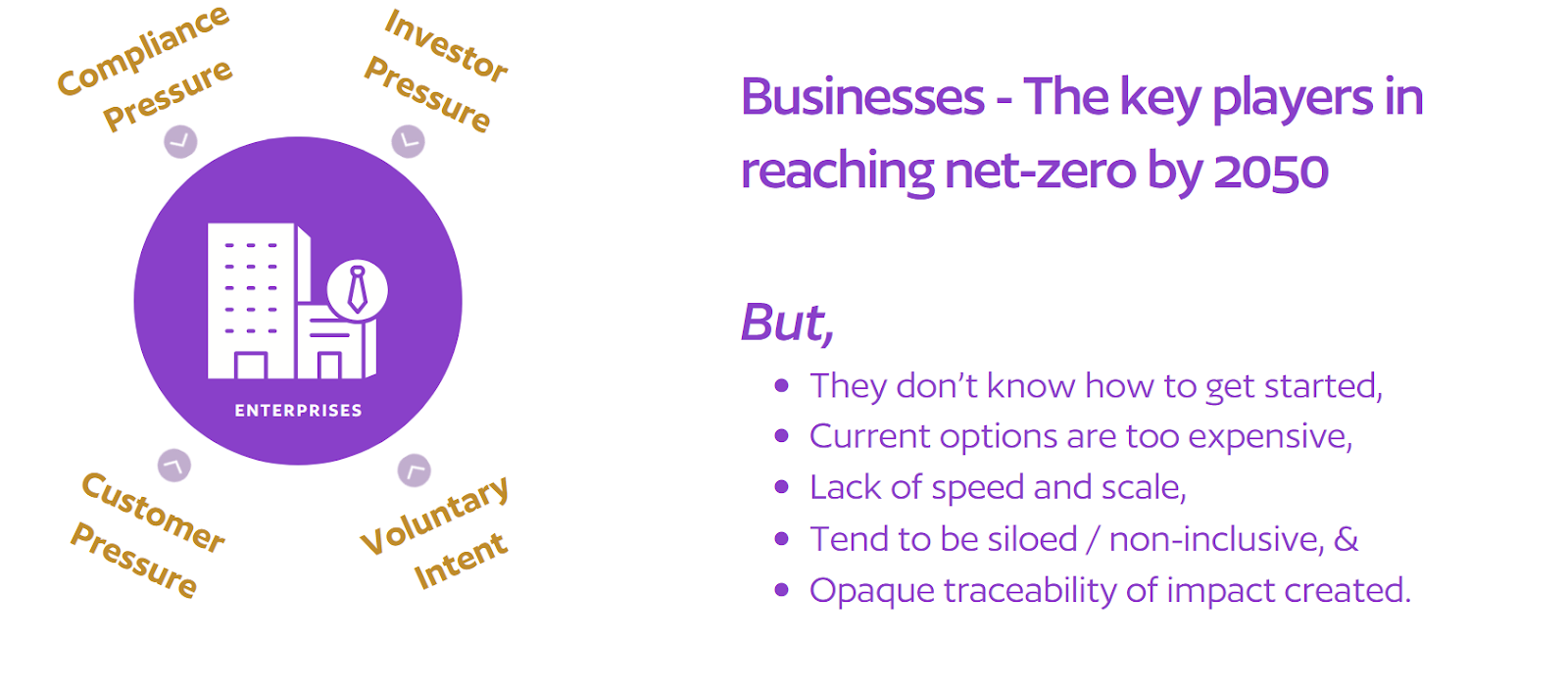A Global IT Enterprise’s Step Towards Achieving Their Net-Zero Goal
Climes provided carbon accounting for employee flight travel to a global IT enterprise. They used this to nudge their workforce towards more sustainable travel policies.

A global IT enterprise partnered with Climes to measure carbon emissions from their employee flights.
Employee travel emissions represent a significant, yet often underestimated, contributor to a company’s carbon footprint. As this global IT enterprise aims for net-zero GHG emissions by 2040, this collaboration with Climes marks a crucial step in assessing its environmental impact and implementing data-driven, sustainable strategies.
Through this carbon accounting exercise, the company is gaining valuable insights and actively engaging and educating every employee to be a part of their carbon footprint reduction efforts.
Navigating Carbon Accounting Challenges of Large-Scale Enterprises

Traditional carbon accounting relies on manual data collection and processing, which might lead to higher costs and a lack of speed and scale in execution. It usually takes between 4 and 20 weeks, depending on the complexity of the business and the level of data available; for most engagements, the timeframe is 10-12 weeks. Such timelines and long processes have made climate action slow and complex for most enterprises to even take the first step.
To address this, a “slice and dice” approach—analysing data in segments such as travel emissions or other operations—enables enterprises to isolate specific challenges, making carbon accounting more manageable and actionable.
The IT services provider sought a streamlined, accurate system to calculate employee flight emissions quarterly.
However, with thousands of their employees travelling domestically and internationally, we needed to find a way to manage & automate the processing of large volumes of data and account for various aspects of flights, such as routes, origins, layovers, and more.
Climes Custom Solution
Climes developed a custom model to handle large-scale data input and calculate carbon emissions efficiently. By analyzing flights’ origin, destination, and type, the solution provided:
- Accurate carbon emissions based on flight data
- Detailed insights organized by employee, function, and region
- A significant reduction in processing time
- At 1/3rd the cost compared to traditional methods
Behind the scenes: The working model was built within a few weeks and was scaled to process vast quantities of data in less than 3 days.
Impact
- This global IT enterprise’s emissions data, organized by region, function, and employee, provided insights into high-emission areas, helping them identify where reductions could be made and what couldn’t be reduced would later be neutralised.
- By addressing a commonly overlooked emissions area, this partnership has significantly reduced time and costs.
- The transparency and detailed reporting offered by Climes allowed the global IT enterprise to make greener choices regarding their travel policies and carbon management.
Lastly, with this carbon accounting exercise, the global IT enterprise is not just addressing a corporate sustainability goal—they’re engaging multiple departments and employees in taking climate-positive actions.

While this global IT enterprise focuses on achieving carbon reductions to the last mile, the following strategies are some suggestions from the Climes team that can serve as a guide for enterprises aiming to adopt greener operations.
These efforts can significantly lower emissions and, when reductions have been maximised, enterprises can turn to neutralisation methods for residual emissions.
Greener Choices for Enterprises
- Encourage Virtual Meetings: Limit travel by promoting remote collaboration.
- Flexible Workspaces: Implement alternative working days to optimise resource use.
- Promote Energy-Efficient Transportation: Encourage public transport, carpooling, and electric vehicles.
- Invest in Green Building Practices: Focus on energy-efficient office spaces.
- Sustainable Procurement: Choose eco-friendly products across the value chain to reduce carbon footprints.
- Reduce Air Travel: Favor direct flights to minimise emissions.
Neutralising Emissions
- Offsetting Residual Emissions: Direct funds to verified, high-impact carbon offset projects through Climes.

- Carbon Insetting: Reduce emissions in the supply chain by investing in renewable energy and efficiency technologies.
- Investing in a Greener Tomorrow: Support long-term projects like nature-based solutions and carbon capture technologies.
Start your carbon accounting journey today and unlock actionable insights—partner with Climes to start your path to net zero—learn more at www.climes.io.


